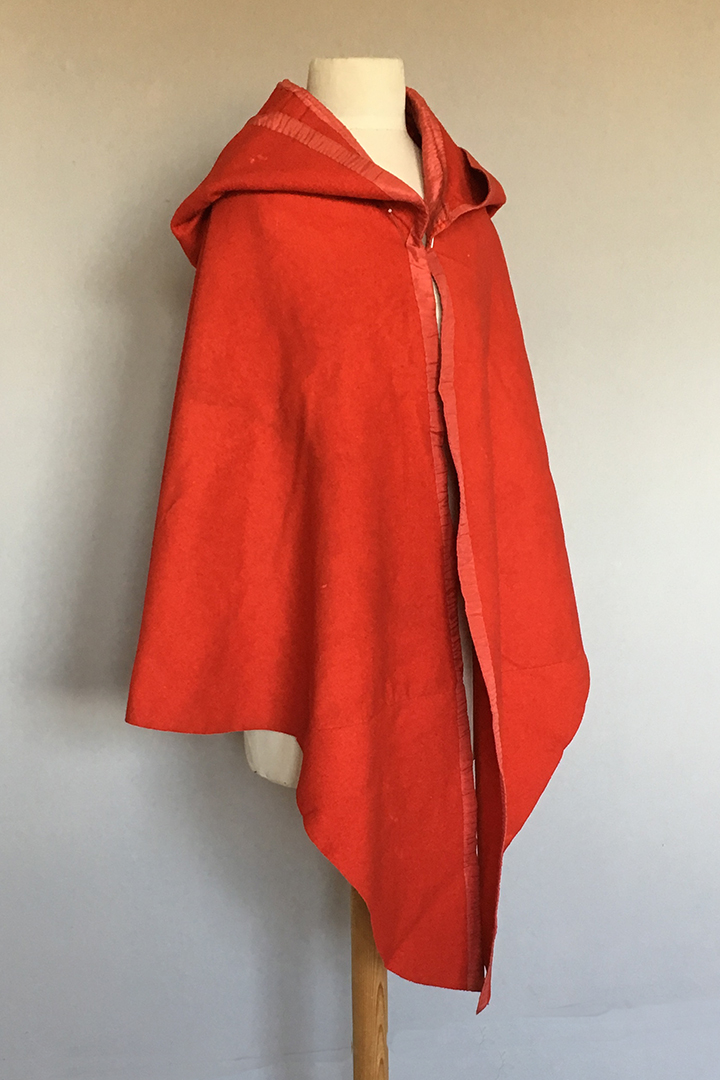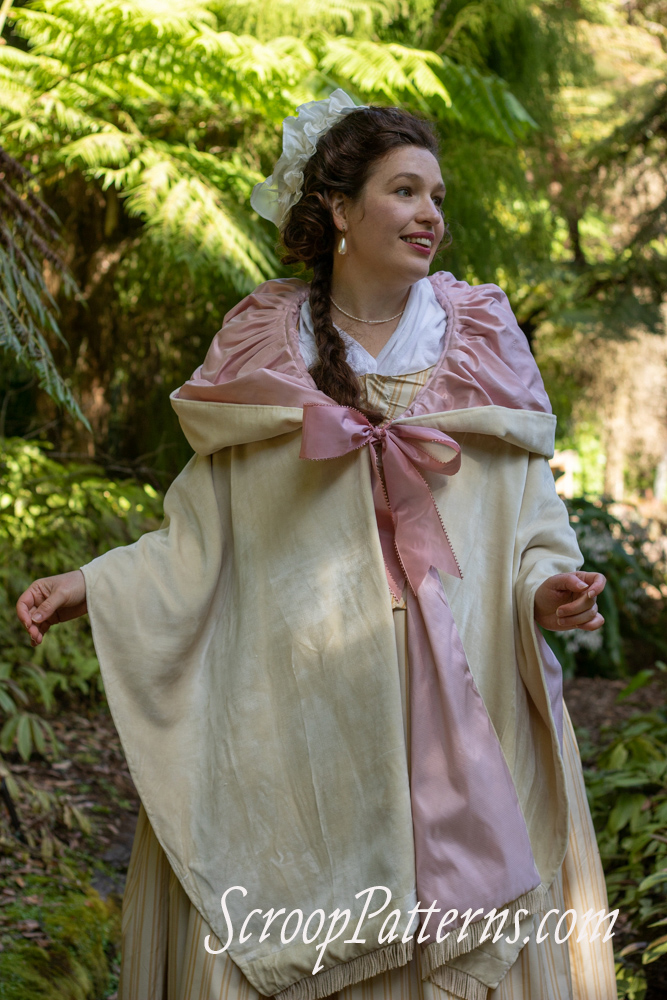Reminder: the Marie, Charlotte, and Sophia patterns, and the combined pack with all three, are on sale until Tue 13 December NZ Time (so that’s Monday for most of the rest of the world) – don’t miss out!
It’s the final post in my series of posts on the inspiration behind the Marie, Charlotte and Sophie patterns. Last, but absolutely not least, is, the Sophia:
The Inspiration:
The primary basis for the Sophia Mantle is this faaaaaaaabulous mantle from the Metropolitan Museum of Art:
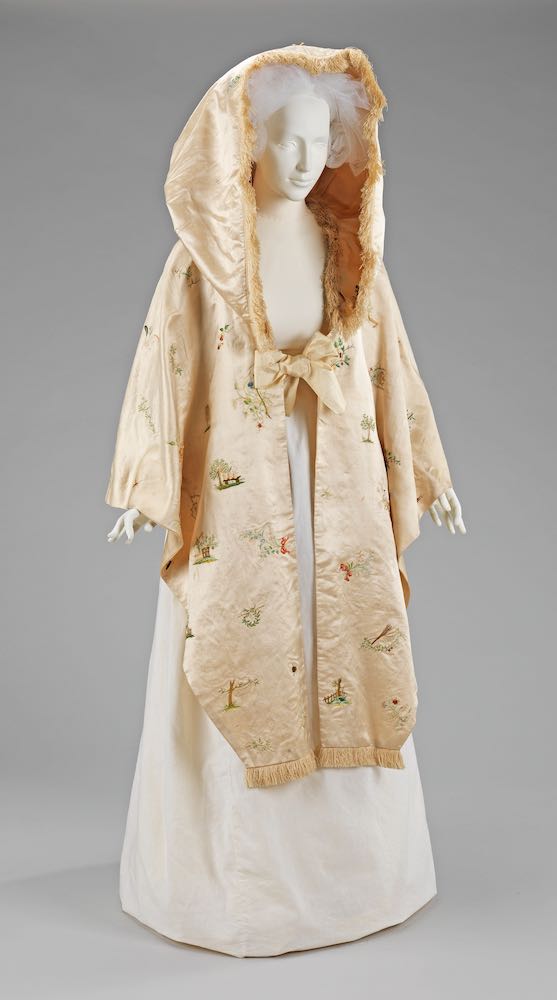
Cape, 1795–1800, British, silk, Brooklyn Museum Costume Collection at The Metropolitan Museum of Art; 2009.300.3890
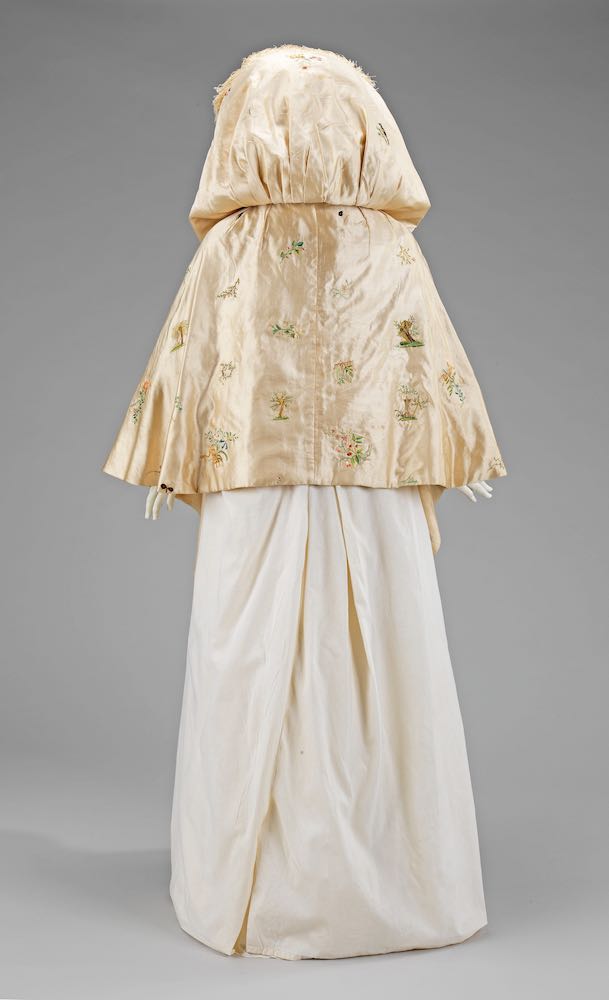
Cape, 1795–1800, British, silk, Brooklyn Museum Costume Collection at The Metropolitan Museum of Art; 2009.300.3890
Enormous hood? Gorgeous fabric? Fun trim? What’s not to love!
While the Metropolitan Museum of Art example is particularly spectacular, late 18th century images of dress are full of examples of mantles with full pleated hoods that are wide enough to fall as collars around the shoulders:
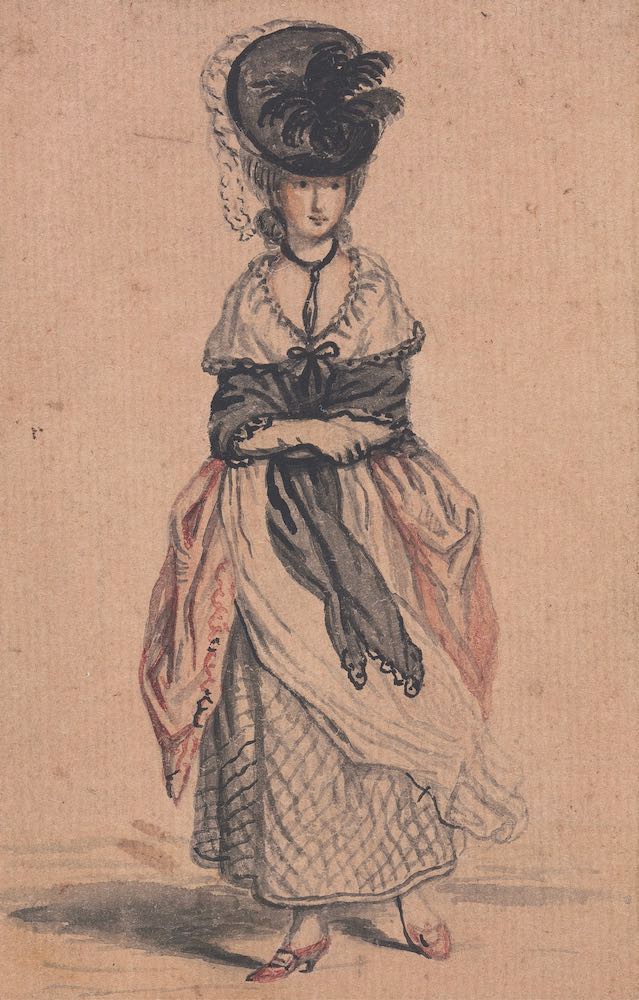
John Collet, ca. 1725–1780, British, A Lady of Fashion, ca. 1778, Pen, black ink and watercolor, Yale Center for British Art, Paul Mellon Collection, B1977.14.4966

The Pleasures of Skaiting – or, a View in Winter, British Museum, 1613392787
(and yes, the innuendo in that image is very purposeful).
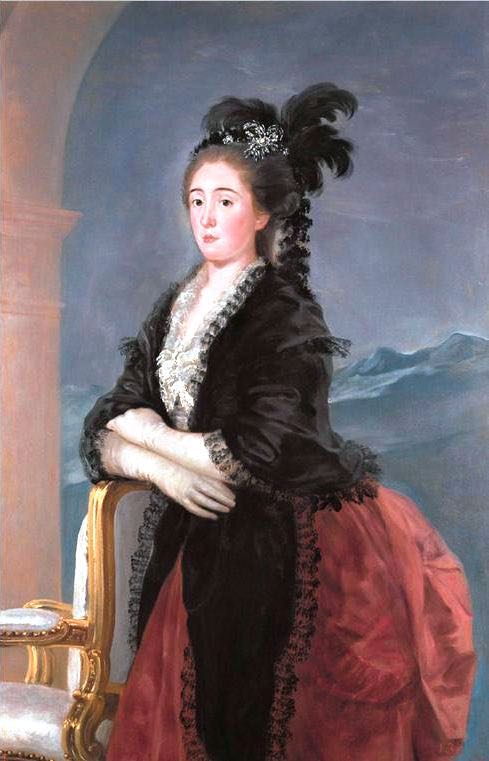
Francisco de Goya, Portrait of María Teresa de Vallabriga, morganatic wife of the Infante Luis, 1783, Alte Pinakothek
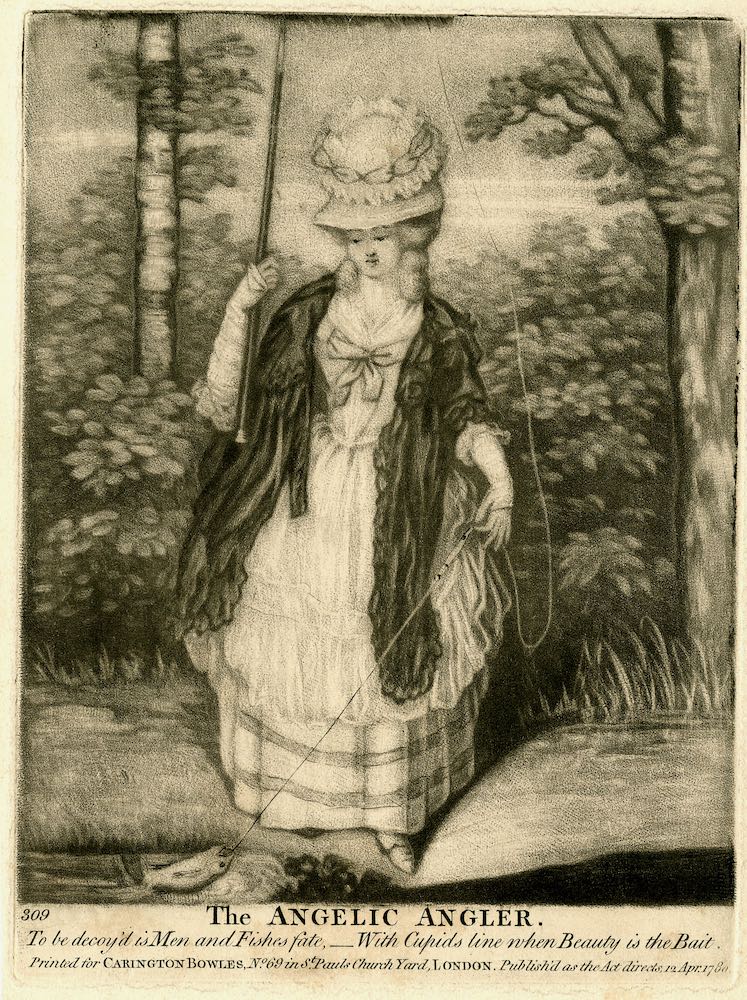
The Angelic Angler 12 April 1780 Mezzotint © The Trustees of the British Museum, 145954001
In addition to the many images of this style of mantle, there are a number of other extant examples, like this gorgeous pink satin one:
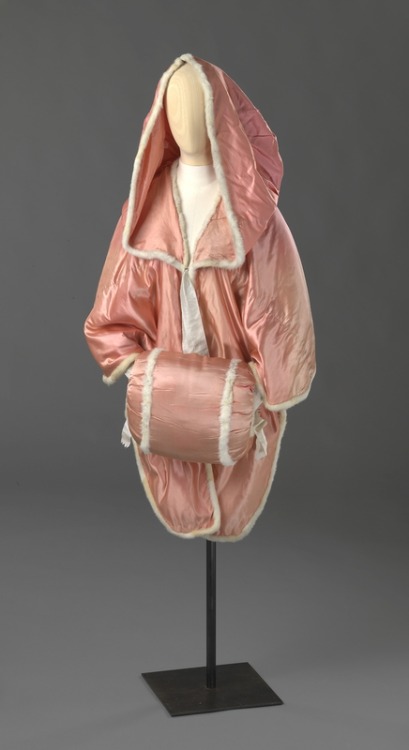
Hood and Muff, 1780-1810, Silk satin with marabou trim, Nasjonalmuseet for Kunst, Arketektur og Design
This wool short cloak, which, while it has a very different body, and different construction, is an example of a wool garment with this style of hood:
Other than the hood, this cloak is quite different to the Sophia, but is an interesting comparison point. The Marie & Charlotte Mantle patterns cover the type of finishing seen on the cloak.
The Construction:
While some of the images of this style of mantle appear to show lighter weight unlined mantles, all of the extant examples (not counting the cloak, as is quite different in its pattern and construction) are more substantial lined garments. They also have really fabulous trim: marabou and fringe and fur!
We decided to focus on a lined, hooded mantle with three trim options: fur, fringe, and marabou.
As it’s very hard to find modern fringe that matches the fringing on 18th century garments, we included instructions on making your own fringe. It’s time consuming, but a wonderful way to give a really period finish to your garments.
And, of course, the Sophia can be mashed up with both the Marie and Charlotte.
Make it unlined based on the instructions for unlined mantles in either of those patterns. Turn it into a hoodless wrap using their neck finish techniques. Use the lace trim instructions in the Marie to trim it with lace, like the mantles shown in so many fashion plates and satirical prints.
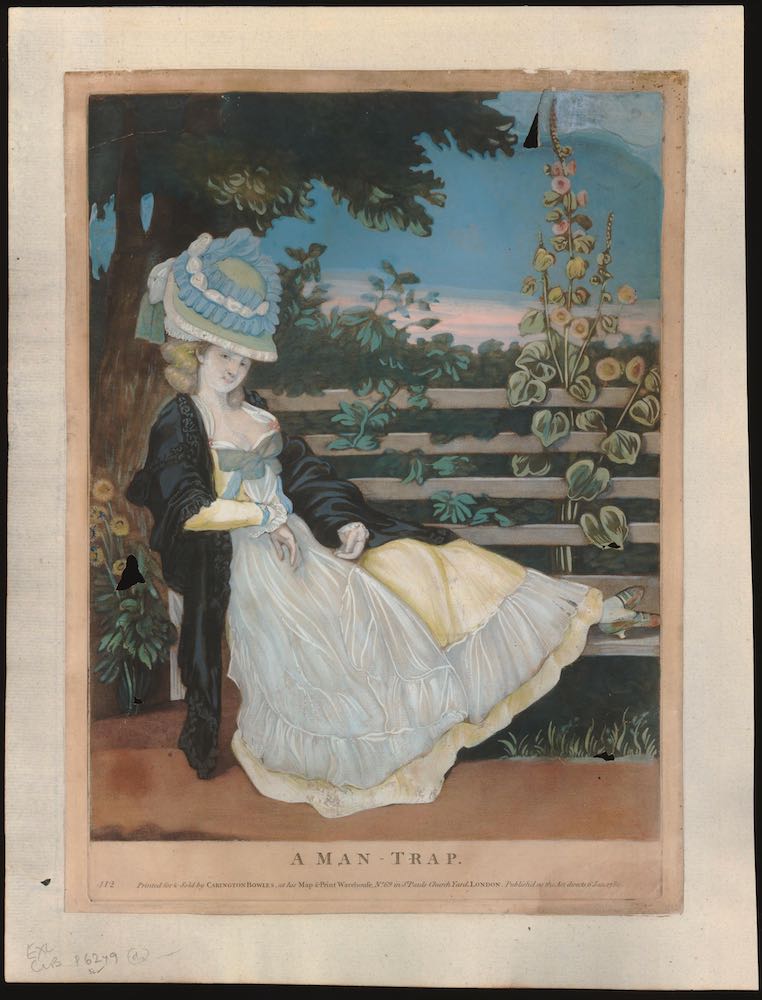
A Man Trap, Carington Bowles, British Museum, 984891001, 2010,7081.2234,
Alter the hanging lappets to be rounded points based on the Charlotte pattern. It’s so adaptable!
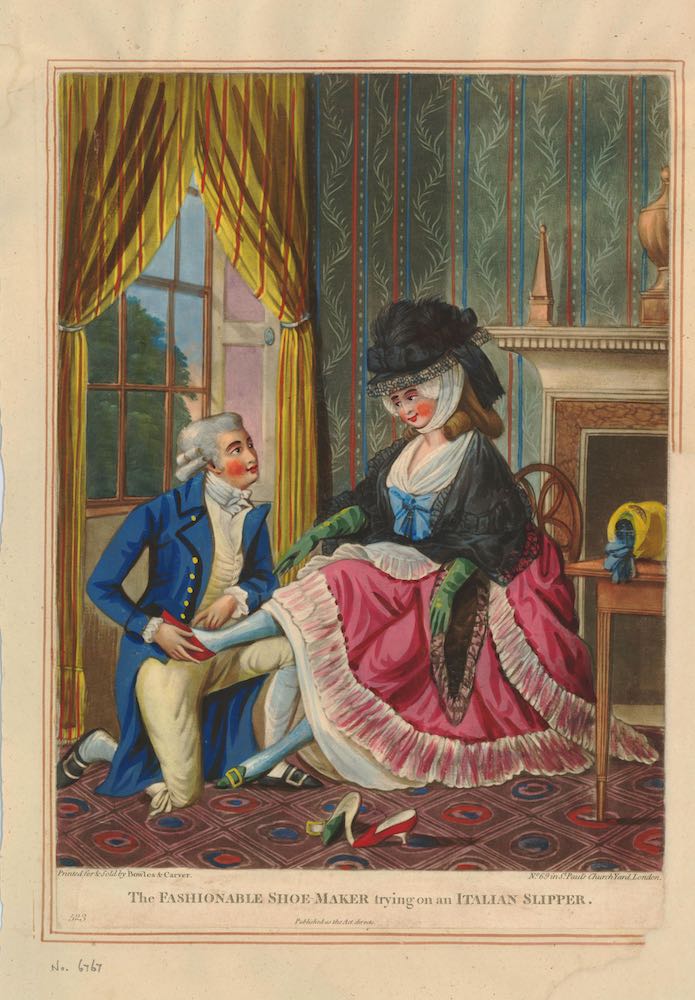
The fashionable shoe-maker trying on an Italian slipper, British Museum, 142532001, 1935,0522.1.185
More about the Mantles:
- Read about the inspiration behind the Marie Mantle here.
- See the Marie Mantle tester makes here.
- Read about the inspiration behind the Charlotte Mantle here.
- See the Charlotte Mantle tester makes here.
More inspiration:
I have an entire pinterest board of inspiration for the mantle patterns, sorted into sections for Marie, Charlotte and Sophia, with an extra section just for lace mantles.
Keep in mind that some of the images are not extremely clear, and may actually depict fichu or cloaks. They are on the board for fabric, colour, or lace type inspiration. Be sure to do your own research if you need to be extremely historically accurate.
Further reading:
- Baumgarten, Linda & Watson, John with Florine Carr. Costume Close Up: Clothing Construction and Pattern, 1750-1790. The Colonial Williamsburg Foundation, Williamsburg, Virginia: 1999
- Bradfield, Nancy. Costume in Detail, 1730-1930. Harrap Limited, London: 1981
- Hunnisett, Jean. Period Costume for Stage & Screen. Patterns for Outer Garments, Book I: Cloaks, Capes, Stoles, and Wadded Mantles. Studio City, CA Players Press, Inc. 2000
- Waugh, Norah. The Cut of Women’s Clothes: 1600-1930. Faber & Faber Limited, London: 1968



